Review by Pete Vack
Photos from the book courtesy Peter Brock
Peter Brock’s fourth book on automotive history and design focuses on his experiences with the Shelby team from ’62-’66 and specifically the design and development of the Shelby-DeTomaso P70 (for Prototype 7 Liter) Can Am car. When he first began to write about the origins of this advanced concept racer he realized that he had to “put the car in context of this incredible time period (1963-1966) and also describe what was happening with Carroll’s numerous other projects.
Managing a number of subjects from the USRRC to Modenese coachbuilding, Brock nevertheless makes it read like an adventure novel one just can’t put down. Brock was an insider, witnessing, and participating in, the confluence of fat tires, rear engines, aerodynamics and the transition to professionalism that completely changed the racing scene from California to Clement-Ferrand. And as much as we think we know about Shelby, DeTomaso, Cobras and building cars in Italy, Brock reveals new facts and anecdotes. It is a joy to read.
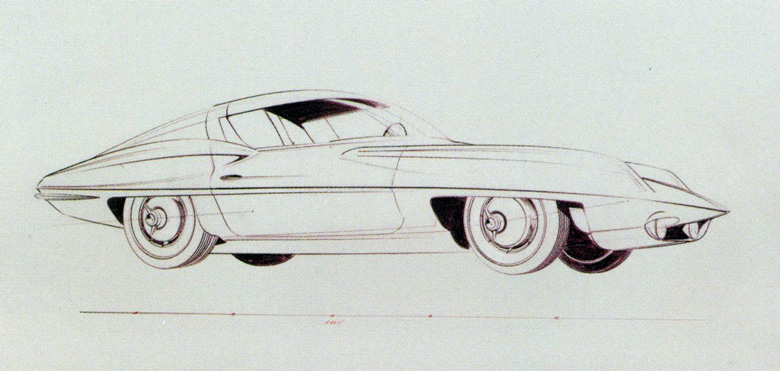
The origins of the Stingray Corvette can be seen in this sketch made in 1957 by Peter Brock. Bill Mitchell saw it too.
Brock bought his first car, an MGTC, at the age of 16 and spent his teenage years helping a neighbor get an MG ready to race. Brock wanted to go racing. Badly. But by the age of 19 in 1957 he realized that racing cost far more than he ever make as a sports-car mechanic. He convinced his mother to cover his tuition at the Art Center College of Design in Pasadena and discovered his second passion; design! Then, out of funds and unable to continue school he convinced a GM head-hunter to give him a chance at GM Styling. So, without graduating he moved to Detroit to work at prestigious GM Tech Center and only THEN did he draw out the sketch which caught the eye of VP of Design Bill Mitchell. It became the basis for the XP-87 concept Mitchell “Sting Ray Racer” which became the production Stingray in’63 – all this at just 20! “But my real goal in life was still, to be a race car driver,” wrote Brock. As soon as he got his SCCA license at the age of 21 he moved back west, taking along an ex-Le Mans Cooper Climax he’d acquired and found a job working for California racing legend Max Balchowsky. Enter Carroll Shelby, who had just won Le Mans and wanted to race one of Max’s Ol’ Yellers to close out his career. They became friends and Brock signed on to run the Texan’s new driving school, among other duties, in 1961.
And so the story unfolds. Central to the plot is Carroll Shelby, whose multiple racing activities were often planned to attract Ford’s attention and later, to ensure that Shelby would get his share of the Ford GT40 program. The performance of the Cobra helped, and the World GT Championship of the Brock-designed Cobra Daytona Coupe helped even more. But wisely, Shelby also made other plans, initiating various other projects just in case he failed to win Ford’s support. The P70 with de Tomaso was one of them.
A wing and a prayer
Before designing the Daytona Coupe in late 1963, Brock met with friend Richie Ginther, just back from his tour of duty with Ferrari. Ginther told Brock about an idea for a rear spoiler he had tried on one of Enzo’s first mid-engined sports-racer Ferraris to reduce exhaust fumes from coming back into the cockpit. It worked, and a nice side effect was that the handling was transformed, and the car was instantly two seconds a lap faster! Race car aerodynamics was about to take off in a big way. Brock and Ginther agreed that an adjustable spoiler or “wing” might be even better so Brock incorporated one into his initial design of the Cobra Daytona Coupe. It was simple. But Brock relates how selling the idea of the aerodynamic spoiler would prove far more difficult than even the concept of the Kamm-tailed coupe itself. The frustrations trying to incorporate a spoiler in his designs against the wishes of very conservative engineers is a theme throughout Brock’s narrative.

Brock made this sketch in 1963 and recalled, “Note the movable rear wing (which I called a ‘ring airfoil’). It was a logical next step from Ginther’s rear lip.”
In addition to the Cobra efforts in Cal Club and the SCCA, Shelby was engaged in the formative years of the USRRC, (an SCCA professional series that pre-dated the Can Am series) using Ford-powered Coopers, which became known as the “King Cobras.” Shelby’s drivers were the best: Bob Holbert, Ken Miles, Parnelli Jones, and joining them was an up-and-coming driver named Dave McDonald.
As Brock told us, “He could have been another Dan Gurney. He was that good.” McDonald was also driving for a friend and sponsor by the name of Craig Lang, who requested that Brock design a body for another Cooper, this one powered by a Chevy. Again, Brock describes how he incorporated a rear “ring spoiler” into the design of Lang’s proposed Cooper and again how it was rejected by those who actually built the body. Without the downforce, the Lang Cooper was “an evil handling racer.”
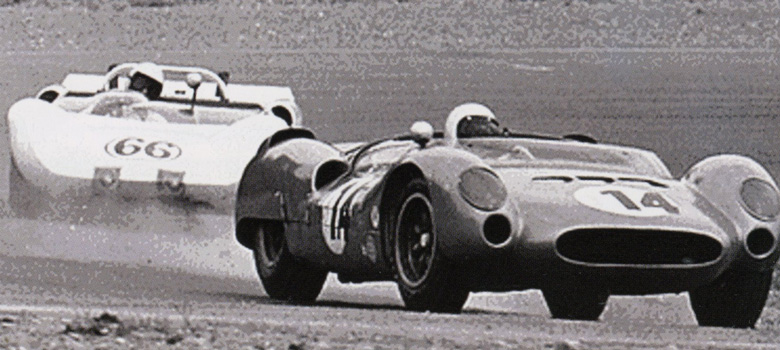
Dave McDonald winning his last race. He beat Jim Hall in the Chapparal after a two hour dice at Kent on May 10 1964.
After the untimely and horrific death of McDonald at Indy in 1964, the Lang Cooper was forgotten. But Brock’s original concept for the Lang Cooper would not be discarded. Shelby had made a deal with Alejandro de Tomaso to build a 7 liter Can Am car using a bored and stroked Ford 289 using de Tomaso’s imaginative and lightweight backbone chassis, very similar to that of the De Tomaso Vallelunga. Ultimately Shelby would send Peter Brock to Modena, along with his drawings for the body, which was an evolution of the Lang Cooper, and this time Brock would get his airfoil.
Italy: Design by wire
Tumultuous might be a way of describing those fast evolving years from 1962 to 1966. Within the world of automobile racing, everything seemed to be happening at once, all over the world. Yet in the heart of Modena, race cars were still being handmade, using the same skills passed down from the middle-ages. Brock had visited Modena earlier supervising the construction of five Daytona Cobra Coupes with Carrozzeria Gransport but when he arrived at Medardo Fantuzzi’s shop (Fantuzzi was also responsible for clothing some of Maserati’s race cars) it was a different ball game.
Brock told us, “What was interesting about the second (first Italian built) Daytona was that we’d sent the wooden buck (used at Shelby’s for the first coupe) to Gransport with my drawings. The difference between the projects was that the Daytona had already been created; the P70 was an all-new design.”
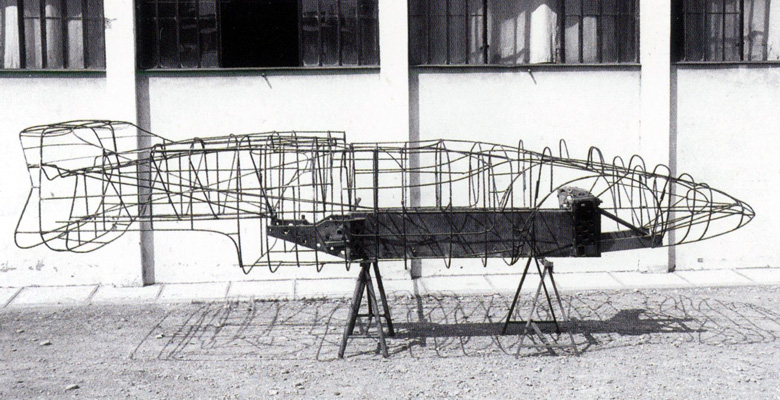
The wire form of the P70, used instead of the heavy, complex and expensive wooden bucks favored by English and American constructors.
Brock’s description and photos of the construction of the P70 are among the best ever written. From the nonchalant way the Fantuzzi crew took the new De Tomaso chassis off an old VW transporter to how they procured the wire used for the ‘maquette’ and then welded the hand hammered aluminum panels with a huge and ancient acetylene torch, Brock was amazed and in awe; his admiration for their talents is as enthusiastic now as it was more than fifty years ago. The Modenese artisans had dispensed with his drawings and never considered using a wooden buck. They made the wire “maquette” substructure by eye, and welded aluminum without goggles. And the result was what Brock wanted, right down to the last detail.
Brock also makes the point that the Fantuzzi operation was different than the better-known coachbuilders such as Pininfarina, Bertone or Ghia, who had engineers familiar with drawings and specs. “In Modena, the whole process of building a body was a far more manually creative endeavor,” writes Brock. At Fantuzzi’s there was no thought of a production line. Each body was totally unique. Each body was a work of art.
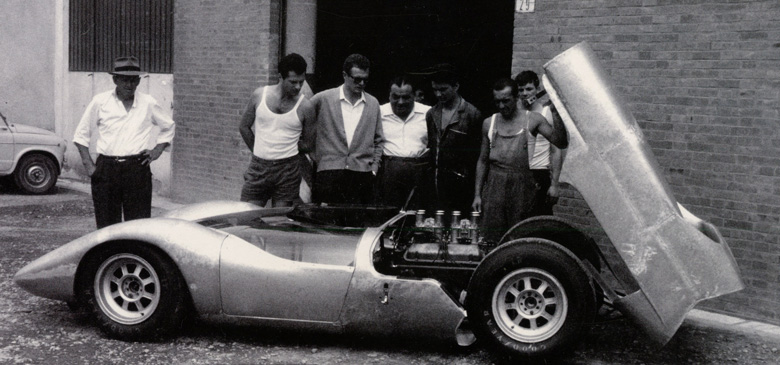
Writes Brock: “Working beside the Italian artisans of Modena was one of the most educational and enjoyable experiences I’ve ever had.” Fantuzzi and crew look upon their handiwork.
The personality clash between Shelby and de Tomaso was sure to come, particularly when the bored and stroked 289 promised by de Tomaso did not appear. By that time, when the engine was due, Shelby had already secured Ford’s GT40 project. He no longer needed any sort of back-program or any of de Tomaso’s belated help. Still, the P70 was displayed by de Tomaso under his own name at the 1965 Turin Auto Show. It was the star of the show. Shelby, however, had already pulled out, leaving the P70 project to evolve into the Mangusta! The race car body was hidden away in a storeroom where it was discovered in 2004 by Philippe Olczyk.
As Shelby transitioned to the GT40 project under Ford, everything changed. When Brock returned to the U.S., he found himself out of job.
Snake bit
But Brock had learned a lot under Shelby, he formed Brock Racing Enterprises, and for 1968-69 secured a contract with Toyota to race their new Toyota 2000 GT in America, or so he thought. He later found out that Shelby had snaked him by convincing Toyota that he would be a better choice to run the Toyota team. That was Shelby, and at the time that was the way Toyota did business as well. We asked Brock how that went down:
“The Shelby-Toyota deal was really pretty unethical from my point of view. From Toyota’s standpoint it was just the way they did business in the Kansai district. It’s a regional thing in Japan. I’d spent three years working with the northern Japanese at Hino who were like Samurais…honor was important. In the Kansai district, it was just the opposite. I lost the project but in the end I won.
“Shelby was a strange person in many ways. One was that he always wanted to feel he was leading or controlling everything. There was only one sun in the Shelby solar system. When Ken Miles, for instance, started getting too much press coverage for his succession of victories Shelby put him down by taking away his ride in the new Daytona for the first race at Daytona. Ken had been the one of the few guys within Shelby who backed the Daytona project. That had created some real controversy. The car was essentially built for Ken – and then Shel’ took it away from him! Ken was so angry he almost quit! But in the end, he was a good team player and came back to manage the team at Daytona…but then on the spot Shelby over-ruled him creating a major fire and we lost the race. Much later, as you probably know, Shelby again did him in by agreeing with Ford PR to force Ken follow orders, drop back and not win at Le Mans in the GT40. A really sad loss for Ken. There were other instances where we had not agreed on something or he’d gone against my advice and then it turned out I was right, so in his later years he was always trying to discredit my contributions.”
After losing the Toyota contract Brock recovered quickly and was approached by Datsun to manage their cars in the SCCA C-Production battles. Brock again made racing history with his team of BRE Datsuns. And he had the last laugh.
“When we showed up with our “old” Datsun roadsters we out-performed Shelby’s Toyotas. We qualified BOTH our BRE-Datsuns for the SCCA Nationals. Shelby’s team did not qualify and so “lost face” with the Japanese. It killed their race program and they quit for TEN years! Shelby and I seldom spoke after that.”
What happened to Brock the racer
But Brock had really wanted to be a race driver. We asked him if, in the end, that mattered.
“Interesting question. I had done most of the track development on the first Cobra for Carroll until Ken Miles was hired. Just before that, when it came to making the decision as to who was going to drive the Cobra at its competition debut at Riverside (against the new Stingrays in October of 1962) he had Billy Krause come to Riverside to test against my times. I was actually slightly faster but Carroll chose Billy! I was REALLY upset as I felt I’d earned the ride. Bill did a great job in the car until it broke, but the car was so fast that it didn’t matter, everyone could see that the car was a winner. We immediately had every top driver calling Carroll to drive on our ’63 USRRC team; Bondurant, Phil Hill, Dan Gurney, David MacDonald, Parnelli. And there went my opportunity to get a good ride. As it has turned out doing much of Shel’s design work has been just as satisfying. Later, I had to make a similar decision on who was going to drive my first BRE team car. I then understood Shelby’s decision to choose Bill. Experience was far more important than youthful speed!”
What a time. What a guy. And a damn good book. Get it before the run is sold out.
Softbound, 132 pages, 8.5 by 11 inches
*The others:
Daytona Cobra Coupes: Carroll Shelby’s 1964 World Champions
Cobra Daytona Coupe CSX 2601: World Champion
Corvette Stingray: Origins of an American Icon
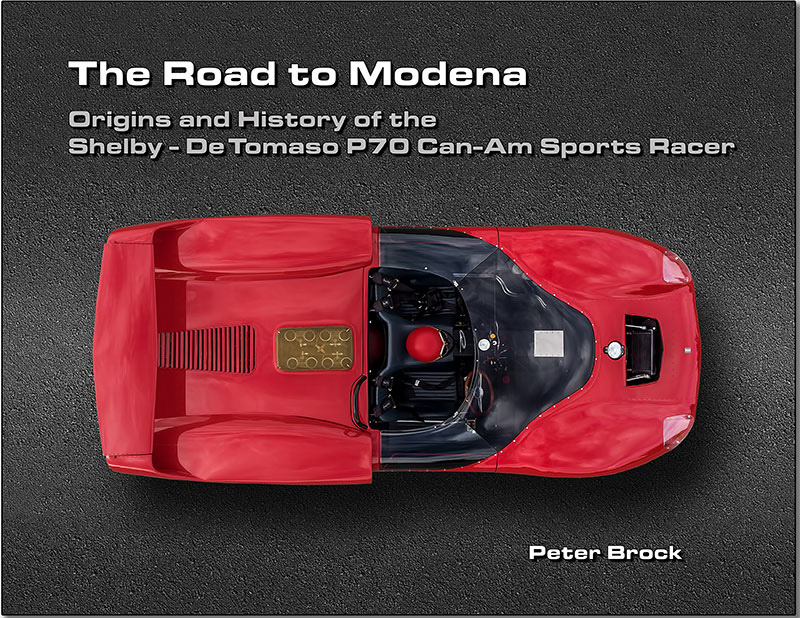
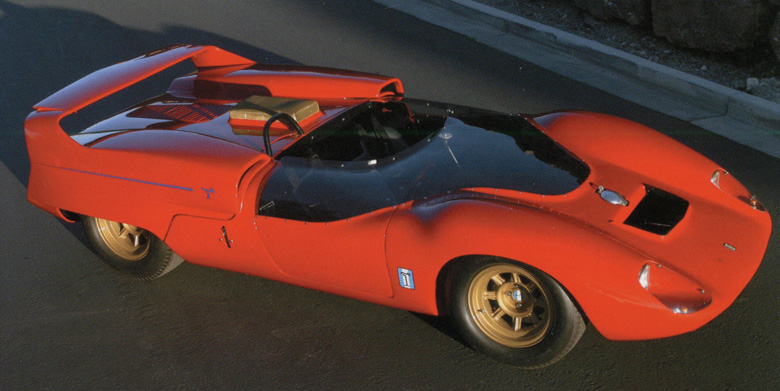
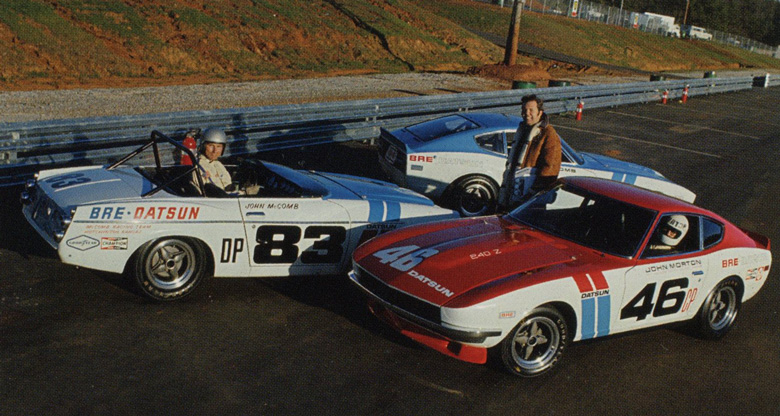
Reading quickly (I’ll go back and read it again) the phrase asserting Shelby caused Miles to “not win” at LeMans sticks out as a pejorative reading of the facts. Ford’s motivation was simply to try to stage a 1-2-3 abreast finish at LeMans which as we all know makes a triumph that much more impressive news wise. So though Miles could have won if Ford wouldn’t have meddled, Ford felt confident enough that a ford was going to win to give orders to the drivers to try to come across the line simultaneously and the drivers followed orders.Because McLaren/Amon’s car had started 24 earlier with his car parked further back down the line, it was ruled by the rulesmakers that he had, and had in truth, traveled further. Thus McLaren/Amon were judged the winners. It wasn’t Shelby deliberately trying to kick Miles down a tad, Shelby was just following Ford’s orders
I agree with Wallace that the orders probably came from Ford, but in the end the relative start positions of Miles and McLaren did not matter. Miles braked before reaching the finish line and crossed it at least a car length behind McLaren, with the third Ford another two car lengths behind Miles. So much for a 1-2-3 abreast finish.
The real story of Le Mans, from the mouth of Bruce hisself, is in my biography of McLaren.
all great photo of the P70
I thoroughly enjoyed the book especially the section on the differences of the Italian fabrication method vs the California ones with proper engineering drawings Pete was used to. Alas I doubt that ability to see a picture and then make it, is maybe a lost art.
Also I didn’t know the background of the Toyoda GT deal. In the end it worked out better for Pete but it had to be hurtful for his old boss to pull the rug out. It is fitting justice in a way that the the Shelby team did not make the runoff’s and BRE won the championship.
Beautiful pictures of step by step fabrication of the car and the Italian way of making custom bodies very quickly